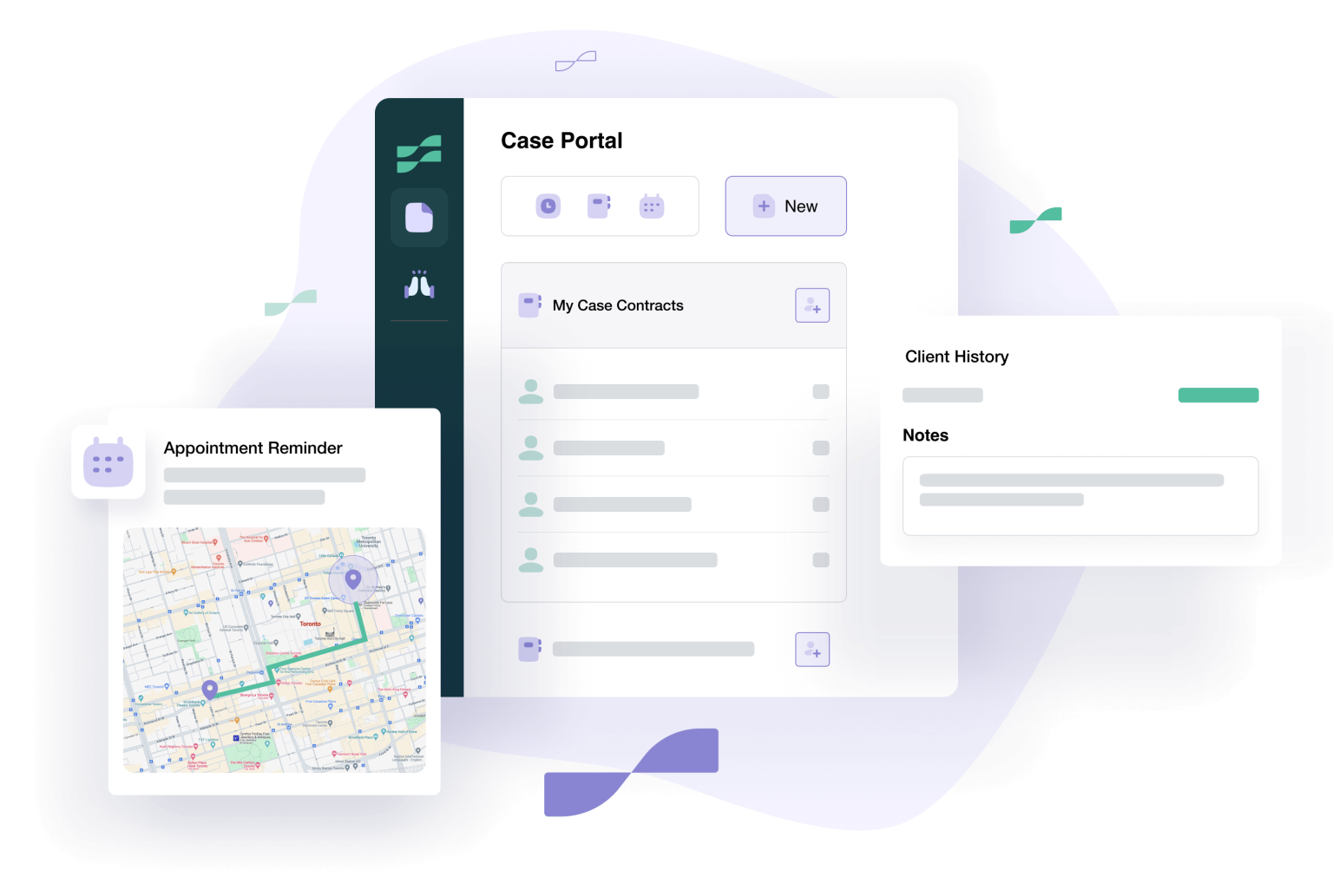
If you’re a social worker who wants to spend less time writing case notes, you’re in the right place! We’ve got some useful writing tips and best practices to improve your case notes, along with some great case notes examples for social workers.
Here’s what you’ll find here:
Case notes are records of a client’s or patient’s one-on-one meetings with social workers, usually written in chronological order.
Social workers record incidents observed during a visit, their client’s recent history and present circumstances, as well as document their overall progress, goals, and response to various treatments (if undergoing any). Social workers may even interview family members and persons relevant to a given case they’re assessing.
Well-written case notes provide objective descriptions grounded in fact and evidence, and leverage a social worker’s assessments and opinions without bias. They are important for insurance coverage purposes, legal proceedings, and social work continuity as they provide an accurate historical record of treatment.
The social work case notes examples provided here can be used for case management in health and social services in order to track helpline calls, manage beds for clients in shelters, and to track the palliative care of patients in hospices.
Before we get to the sample case notes and best practices, let’s take a look at what you should include in your social work case notes.
This guide presents a general overview of what information to include in your case notes. Exactly what must be entered (or left out) is dependent on what is relevant to the service or support you provide.
Here’s an outline you can follow to make sure you cover all relevant information:
Who: What is the name and designation of the person submitting the case note?
What: What was done (what services were provided)?
Where: Where did it take place (whether via phone or in-person)?
When: What was the date of service?
Why: What was the reason for interaction and intended goal (whether this is a follow-up meeting, monthly or weekly scheduled meeting, unit inspection, intake or exit meeting)?
Meeting Information and Observations
Client/Patient History
Follow up information
Social work case notes will vary from one organization to another depending on organizational policies, documentation formats, and legal guidelines. To give you a clear idea of the different styles and formats, we’ll take you through five sample case notes for social workers across different sectors, including shelters, hospices and social service organizations. But first, let’s look at a few popular documentation formats. Different styles of documentation are used to help social workers organize their notes and prevent key information from being missed. You can choose whichever one works best for your organization. Here are some common styles:
Take a look at this case note example of a home visit from a Family Rapid Re-Housing and Stabilization Program (FRSP). (Note that this does not use a specific documentation style, but follows a clear structure and format and is highly detailed.
Angela Lewis, FRSP case manager, met with Ms. George at her home on 10/24/2019 at 10:00am for her scheduled monthly home visit. Ms. George was home alone at the time of the home visit as she reported that her children were at school. Ms. George appeared to be in an overall good mood at the time of the visit and was very engaged. Her apartment was free from excess trash and the client’s kitchen was free from excess food debris at the time of the visit. There also appeared to be no maintenance concerns in the unit. During the home visit with Ms. George today, the writer completed and reviewed the Housing and Participation Assessment Report (HPAR) and also assisted Ms. George with completing her monthly budget. The writer engaged Ms. George in a conversation about her progress with her goal of increasing her income. Ms. George shared that she completed about three job applications this month which included: Starbucks, Target and Marshalls. She reported that she has not yet heard back from Marshalls or Target, but shared that Starbucks contacted her for an interview which is scheduled for November 5th 2019 at 2pm. Ms. George confirmed that she will attend her job interview with Starbucks at 2pm on 11/5/2019 and also reported that she will continue to use Indeed.com as her method of searching and applying for jobs. In addition to continuing her job search, the writer suggested that Ms. George also contact Marshalls and Target in effort to follow up on the status of her applications in which Ms. George agreed to do so. Ms. George shared her goal to apply for a total of 6 jobs during the month of November. Ms. George is scheduled for a follow up phone call with the writer on 11/15/2019 at 11am regarding her progress with her job search.
This is another case notes example of a home visit, written in the S.O.A.P. documentation style.
S = Strengths
I met with Mrs. Diaz on xx/xx/xx. Despite her financial and health concerns and her reported sadness, she has followed through with most previously agreed upon tasks. She also reached out to her children this past week, which resulted in her receiving a nice visit from her son and his family. She said that she felt in slightly better spirits because of it.
O = Objective Account
Mrs. Diaz reported that she went to the food bank and has enough food to last until her next social security check arrives next week. With my assistance, Mrs. Diaz completed an application for food stamps. We also made an appointment for her at the food stamps office on Friday and I provided her with a Metro Card to get to and from her appointment. She stated that she did not call the Community Health Center to make a medical appointment as planned. When I asked her why she didn’t follow through with this, she said she is uncomfortable attending a community health center and that she is fearful of what the doctor might tell her. This writer also provided Mrs. Diaz with a referral to Agency T for financial counselling and tax preparation. This writer scheduled an appointment at Agency T on xx/xx/xx.
A = Assessment
Ms. Diaz has followed up on all tasks agreed upon with the exception of making a medical appointment and says she is feeling more hopeful.
P = Plan
S = Strengths
Client reported difficulties in keeping appointments with providers including this case manager, ADAP, and the doctor. Client expressed concern with memory issues and transportation challenges.
O = Objective Account
Client was polite and joking throughout the meeting. He was neatly dressed, well spoken but had to stop to think about what he was saying as he had trouble staying focused.
A = Assessment
Client is at risk of being non-adherent to medications and other appointments. Client needs reminders to assist with keeping appointments, a pillbox to help with medication adherence and help with transportation.
P = Plan
Provide client with a pillbox and have a nurse in the clinic assist in setting it up. Provide client bus tokens to assist in getting to appointments. Call client 24 hours prior to visit with case managers as a reminder.
50 hours after initial admission visit Mrs. Violet is in visible pain upon entering the room. She is miserable. Moaning and tossing and turning in the bed. She has been taking her Lortab 10/500 as directed, taking 1 every 8 hours. The Roxanol® has not been filled. The patient’s daughter is afraid that she will “kill“ her mother with the morphine. Mrs. Violet is nauseated, unable to tolerate even water. She has not had any of the meds from the comfort kit. Her daughter has not wanted to “bother” the Hospice staff for instructions on how to use the “Comfort Kit” (preordered medications to assist with s/sx during crisis). Pollyanna received instructions initially but did not think she would need it.
There has been no bowel movement since prior to her hospitalisation 7 days ago now. You now suspect some sort of intestinal obstruction. The patient is adamant that she does not want surgery. She does agree that in the hospital that she might be able to get more comfortable with the aggressive pain management (IV meds, PCA pump possibly). Mrs. Violet’s daughter states that as long as her mother can make her own decisions that the family will abide by them. Decision is made to transfer to GIP for Pain and intractable nausea symptom control.
(Data) Clinic-visit with client to complete and update care plan. Client spent most of the visit talking about her medications. She mentioned that she gets sick often and suffers from nausea from time to time for no apparent reason. She said she has tried to follow the directions given by the doctor, but is concerned about the recent weight loss she has had and wonders if it is due to the medications.
(Assessment) Client fidgeted, talked fast, and seemed stressed over her medical condition. During the visit she spoke little about her family life, she seemed to be more preoccupied with having her meds changed and getting past the nausea. Not much improvement from her last visit.
(Plan) Will follow up with client to ensure she relates info to her doctor during her next visit and refer for adherence counselling until client feels better. Continue to work with client on adherence.
Creating and entering new case notes is something caseworkers need to do on a regular basis, so it should be really easy and straightforward. Using web-based case notes software like Sumac Case Portal can help.

With Sumac Case Portal , caseworkers to enter case notes, and manage clients and meetings from a mobile phone, tablet, or laptop. Just find find the client, select case manager, program, and enter the notes. When the case notes are saved, they are automatically attached to the client’s record in chronological order.
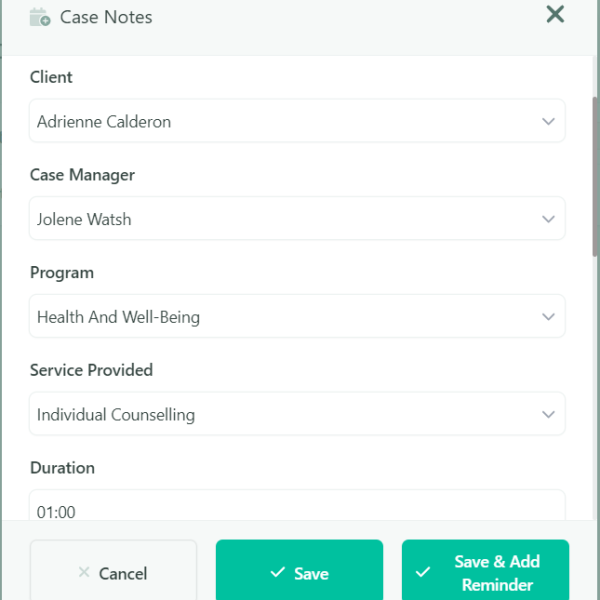
If you’re using Sumac nonprofit case management software in conjunction with Case Portal, your case notes template will be configured for the exact needs of your social service organization, so entering case notes is really easy
For Health & Social Services, your case notes template will be configured with your services in a drop down menu, along with other configurations you need.
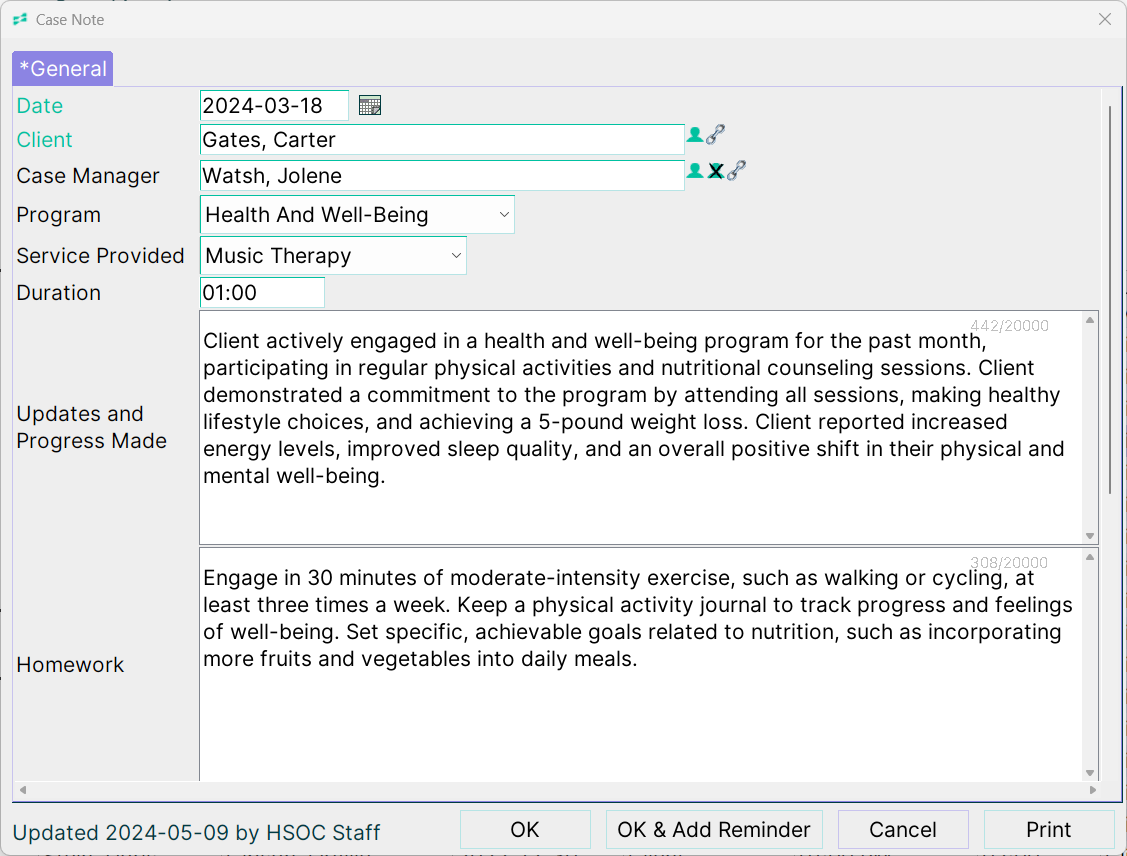
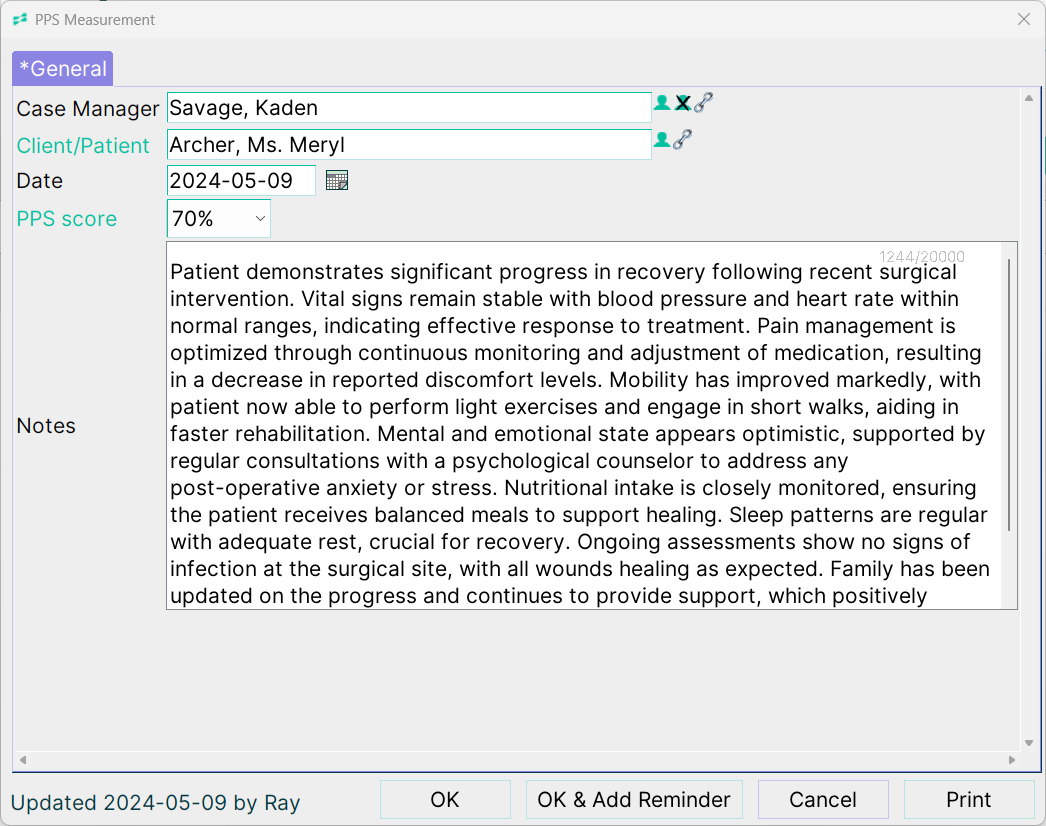
For Palliative Care & Hospice , your case notes template will be configured with a drop down so you can record PPS score, along with other configurations you need.
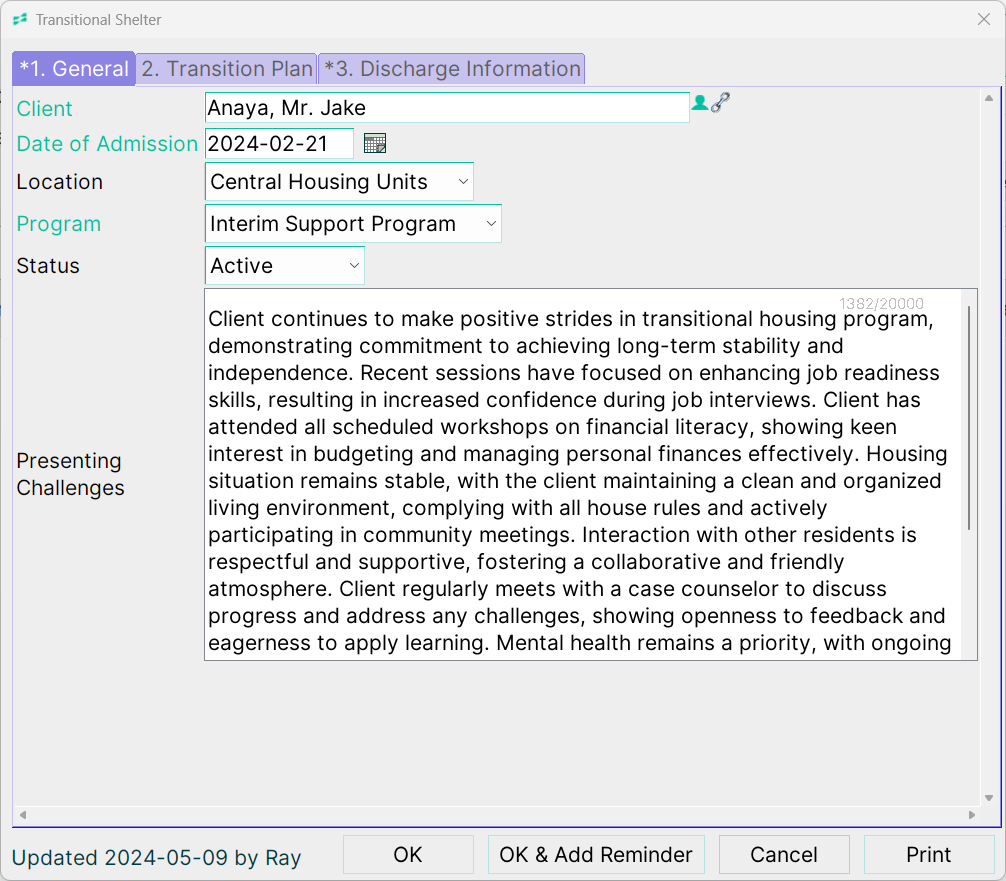
For Shelter & Transitional Housing, your case notes template will be configured with a drop down to indicate the reason for contact, along with other configurations you need.
Get a free demo of Sumac Case Management today HERE.
Let’s take a look at some best practices and writing tips to help you create timely and accurate case notes.
When writing case notes make sure you are as clear, concise, and factual as possible. Your notes should be easy to read, and not use overly complicated sentences. Besides your observations, you should also document any legally relevant information, especially if any aspect of treatment presents a liability to you or the client.
A good way of keeping your notes as detailed and accurate as possible is to record them in a timely manner, either soon after your meeting or the next day. If you are pressed for time, summarise the meeting and note a few key points immediately after. You can then write out a more detailed version of your case notes when you have the time. This way, you won’t forget important observations that could be relevant to a client’s treatment.
Once you have your case notes written down, review the information to ensure that it is up to date, accurate and grammatically correct.
Litmus Test for a Good Case Note